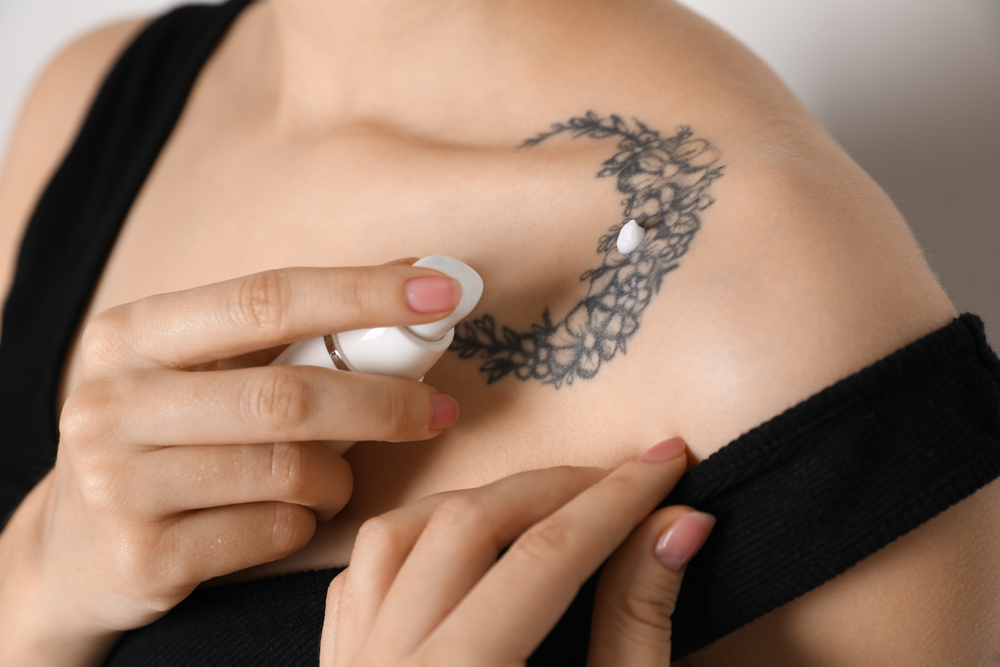Getting a tattoo is an exciting experience, but the process doesn’t end once you leave the tattoo studio. Proper aftercare is crucial to ensure your new ink heals beautifully and maintains its vibrant appearance for years to come. In this comprehensive guide, we’ll walk you through the essential steps of tattoo aftercare, so you can confidently navigate the healing process.
Understanding the Healing Process
When you get a tattoo, your skin undergoes trauma, and it’s essential to treat it with care. The healing process typically takes 2-4 weeks, during which your tattoo will go through several stages. Initially, your tattoo may appear red, swollen, and may even ooze a bit of ink and blood. This is normal and part of the body’s natural healing response.
Removing the Bandage
Your tattoo artist will cover your fresh tattoo with a bandage or wrap to protect it from bacteria and irritation. Leave this bandage on for the amount of time your artist recommends, which is usually between 2-24 hours. When it’s time to remove the bandage, wash your hands thoroughly with soap and water to prevent introducing bacteria to your healing tattoo.
Cleaning Your Tattoo
Gently wash your tattoo with lukewarm water and a mild, fragrance-free soap. Use your clean hands to softly rub the tattoo in circular motions, removing any excess ink, blood, or ointment. Avoid using washcloths, loofahs, or sponges, as they can harbor bacteria and irritate your skin. Rinse the tattoo thoroughly and pat it dry with a clean, soft towel.
Moisturizing and Protecting Your Tattoo
After cleaning, apply a thin layer of fragrance-free, hypoallergenic moisturizer to keep your tattoo hydrated and prevent scabbing. Be careful not to over-moisturize, as this can lead to clogged pores and hinder the healing process. Avoid petroleum-based products and opt for tattoo-specific aftercare ointments or natural moisturizers like coconut oil or shea butter.
Dealing with Itching and Peeling
As your tattoo heals, it’s common to experience itching and peeling. This is a sign that your skin is regenerating and should not be a cause for concern. However, it’s crucial to resist the urge to scratch or pick at your tattoo, as this can lead to infection, scarring, and damage to the design. If the itching becomes unbearable, try gently tapping the area or applying a cold compress for relief.
Avoiding Sun Exposure and Soaking
During the healing process, it’s essential to keep your tattoo out of direct sunlight and avoid soaking it in water. Sun exposure can cause your tattoo to fade prematurely and may even lead to skin damage. When going outdoors, cover your tattoo with loose, breathable clothing or apply a broad-spectrum sunscreen with an SPF of at least 30 once the tattoo has fully healed.
Similarly, avoid submerging your tattoo in water, such as swimming pools, hot tubs, or baths, until it has fully healed. These environments can introduce bacteria and cause irritation, potentially leading to infection.
When to Seek Professional Help
While most tattoos heal without complications, it’s essential to be aware of signs that may indicate a problem. If you experience severe redness, swelling, or pain that persists beyond the first few days, or if you notice any signs of infection such as excessive oozing, fever, or chills, contact your tattoo artist or a healthcare professional immediately.
In some cases, individuals may experience allergic reactions to tattoo ink or develop other complications. If you’re considering tattoo removal, it’s crucial to consult with a qualified professional, such as a San Diego, CA laser tattoo removal specialist, to discuss your options and ensure the best possible outcome.
By following these tattoo aftercare guidelines and listening to your body, you’ll be well on your way to enjoying your beautiful new tattoo for years to come. Remember, patience and diligence are key during the healing process, and if you have any concerns, don’t hesitate to reach out to your tattoo artist or a healthcare provider for guidance.







